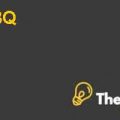
Economics Case Solution
INTRODUCTION
This report includes macro-economic indicator of United Arab Emirates such as the GDP growth rate, unemployment rate, inflation rate and the current account balance. This report discusses the fall of oil prices and the cause and its possible effects. The importance of Oil exports in the current account of the United Arab Emirates and all the potential effects of the drop in the oil price on the current account balance are discussed as well.Similarly, the challenges that United Arab Emirates will face in the near future are also discussed in this report.
MACRO ECONOMIC INDICATORS:
Figure 1 GDP growth rate.
Gross domestic product (GDP) in the United Arab Emirates increased to 4.6% in 2014 as compared to 4.3% in 2013. The average GDP growth rate in the United Arab Emirates is 3.85% from 2005 to 2014, which reached the highest level in the year 2006 which was 9.8%.In addition,the lowest level in 2009 was -5.2% which was a record breaking decrease in the level of GDP growth rate in the United Arab Emirates.
United Arab Emirates is the most developed country with respect to the other Arab Gulf countries and has one of the world’shighest GDP per capita. The country still focuses to become a commodity based economy with total exports of oil and natural gas of 40% and 38% of GDP comprised from commodities. But several steps had been taken in order to diversify the economy and reduce country’s dependency on oil revenues. The steps taken also includedheavy investment in tourism and financial and construction sectors.(www.worldbank.org)
UNEMPLOYMENT RATE:
Figure 2 unemployment rate
A decrease in unemployment rate in the United Arab Emirates was experienced in 2012, which decreased to 4.2% in 2012 as compared to 4.6% in 2011. This was due to the reason that there were fewer jobs created in these years by the government and the business prevailing in the economy and as a result unemployment rate increased. Average unemployment rate in the United Arab Emirates stands out to be 3.84% from 2005 to 2012. Reaching at the highest level of 4.6% in 2011, and lowest level in 2005, which was 3.1%.
(www.worldbank.org)
INFLATION RATE:
Figure 3 Inflation rate
Inflation is the general increase in price level in an economy. Inflation rate in the United Arab Emirates fluctuates almost every month but the change is very limited. As shown in the diagram above the highest level of inflation rate was seen in the month of August 2015, which was 4.94% and the lowest level recorded was 2.8% in November 2014.
In the United Arab Emirates, inflation rate forecast is calculated on the basis of auto regressive integrated moving average model. Inflation rate is one of the main issues when it comes to the purchasing power of people as the purchasing power of the population decrease due to higher inflation rates and as a result, the businesses in the United Arab Emirates start losing their sales and revenue figures decrease tremendously when inflation rates are high in the United Arab Emirates.(www.worldbank.org)
CURRENT ACCOUNT BALANCE:
Figure 4 Current Account Balance
Current account balance surplus was recorded in the year 2014 which was 200600 million;the current account balance was averaged at 127786 million from 2005 to 2014, which is in positive figure. This means that the balance of trade including imports and exports were better and exports were more than imports, which resulted in a surplus...................
This is just a sample partial case solution. Please place the order on the website to order your own originally done case solution.











